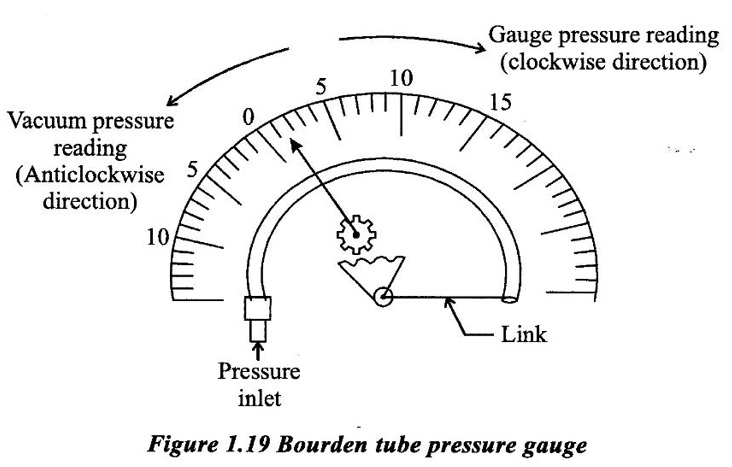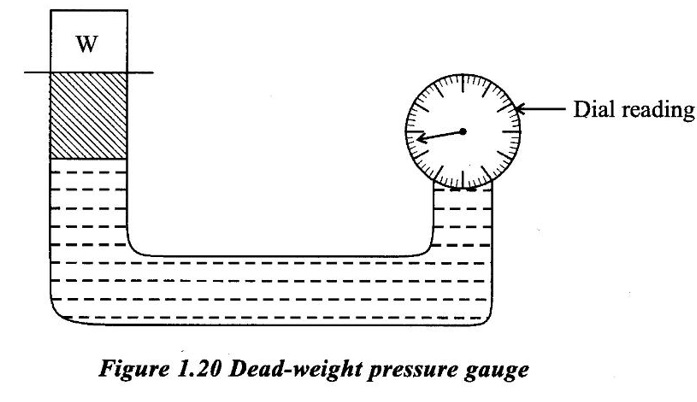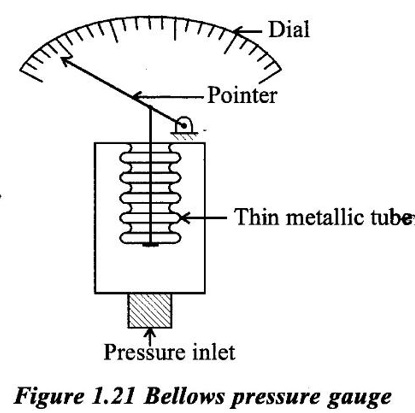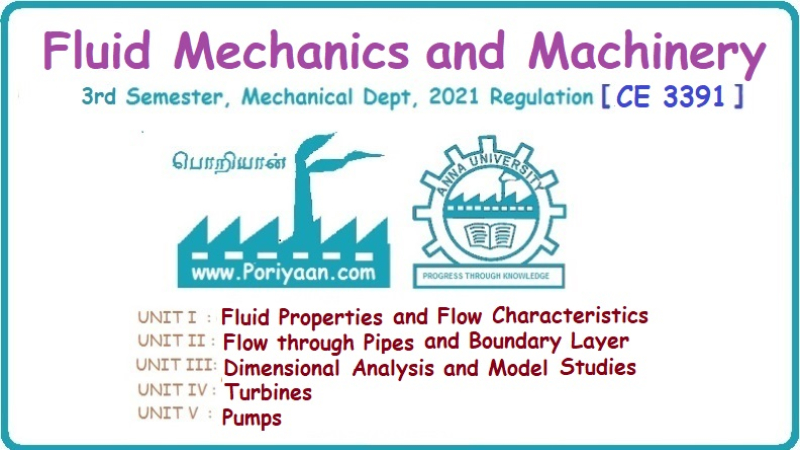Fluid Mechanics and Machinery: Unit 1: Fluid Properties and Flow Characteristics
Mechanical Gauges
Types, Construction Diagram, Working Principle
Mechanical gauges are used to measure high fluid pressure and where high precision is not required.
MECHANICAL GAUGES Mechanical gauges are used to measure high fluid pressure and where high precision is not required. Some of the common types of mechanical gauges are given below: (a) Diaphram pressure gauge (b) Bourdon to be pressure gauge (c) Dead - weight pressure gauge (d) Bellows pressure gauge A Diaphram pressure gauge is used to measure relatively low pressure. This gauge uses an elastic diaphragm which gets deflected towards low pressure. The diaphragm pressure gauge is shown in fig 1.18 which has an opening through which the fluid enters which in turn results in the elastic deformation of the diaphragm under the action of pressure, with the help of special linkage mechanism a pointer is made to respond the deformation of diaphragm, over a circular dial. Bourdon tube pressure gauge uses a tube of steal or bronze which is elliptical in cross-section and curved in to a circular arc. This tube is called, bourdon tube. One end of the tube is rigidly fixed to the frame through which the fluid enters. The other end of the tube is closed and free to move as shown in fig 1.19. When the gauge is connected to the vessel containg fluid under pressure, the elliptical cross-section of the tube becomes circular cross-section due to the increase in internal pressure. This cause the tube to straighten at the closed end of tube. Simillarly when the gauge is connected to a partial vacuum, the tube tends to close at the closed end off tube. Thus the movement of the free end of the closed tube is transmitted to the pointer through a mechanism. The movement of the free end of the Bourdon tube is directly proportional to the difference between the external atmospheric pressure and internal fluid pressure. Dead weight pressure gauge uses oil as the working fluid. A dead weight is placed on the top of a plunger fitted in a vertical cylinder as show in fig 1.20. It works on the principle of pascal's law which states that the intensity of pressure (P) at any point in a fluid at rest is same in all direction. Thus the pressure is transmitted to the pressure gauge by loading the plunger. Intensity of pressure, P = W/A Where W → load on plunger. A → Cross-sectional area of plunger = π/4 D2 D → Diameter of the plunger Bellows pressure gauge uses a thin metallic tube made of elastic element which expends or contracts based on the response to the pressure changes. Thus the mechanism attached to the gauge moves the pointer on a dial.1. Diaphram Pressure Gauge

2. Bourdon Tube Pressure Gauge

3. Dead Weight Pressure Gauge

4. Bellows Pressure Gauge

Fluid Mechanics and Machinery: Unit 1: Fluid Properties and Flow Characteristics : Tag: : Types, Construction Diagram, Working Principle - Mechanical Gauges
Related Topics
Related Subjects
Fluid Mechanics and Machinery
CE3391 3rd semester Mechanical Dept | 2021 Regulation | 3rd Semester Mechanical Dept 2021 Regulation
